On a clear day in late February, just before Italy went into lockdown, I set off from Florence to Podere il Casale, an organic, family-run farm located in the breathtakingly beautiful area of the Val D’Orcia. The property, located about ten minutes from the Renaissance town of Pienza has been owned by Swiss-born, Ulisse Braendli and his wife Sandra, for the last thirty years. They bought the farm-house and surrounding land in 1991 after searching for a place where they could not only live with their family but where they could literally live off the land. I was met by the sound of goats bleating and chickens clucking, before also coming face to face with a rather noisy peacock – a very nice welcome and the view of the sweeping valley before me looking towards Mount Amiata in the far distance offered an unforgettable backdrop.
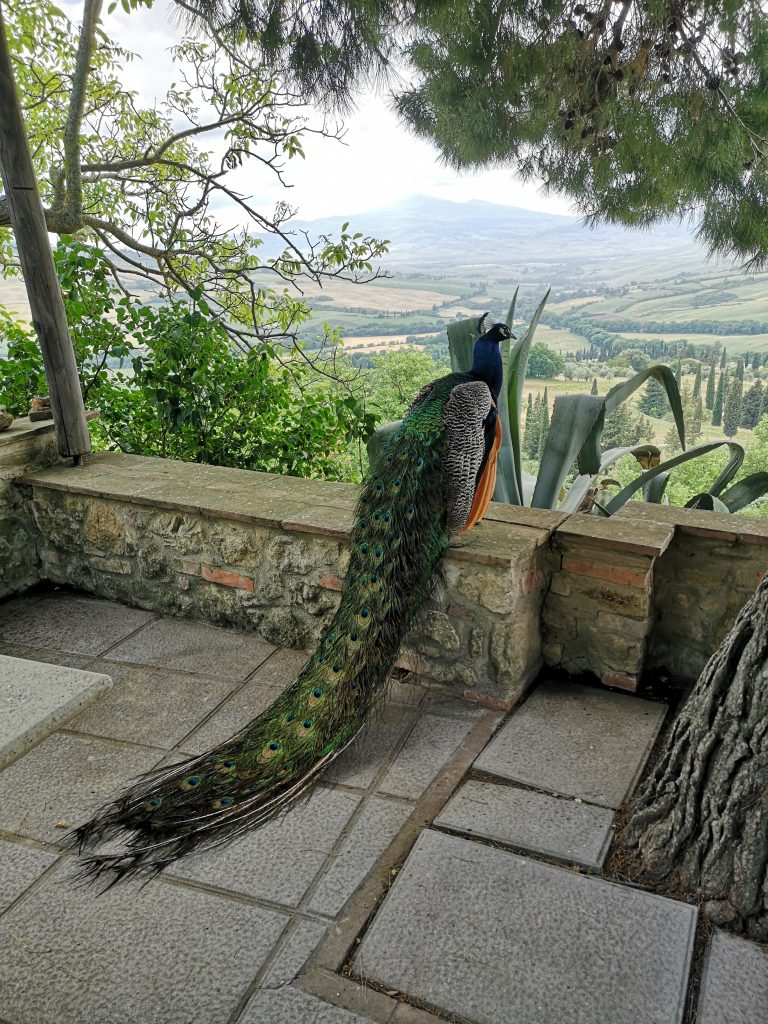
Italy was the natural choice for Ulisse and Sandra as they had both spent a lot of time here in their youth and spoke the language quite well. They started their property search in Piemonte but quickly decided that it was not the right location, mainly because there were no olive groves. Olive oil was very important to Ulisse and so Tuscany, which also offered a nicer climate was their next choice.
Podere il Casale had been on the market for more than ten years when the couple arrived at the three-hundred-year-old farmhouse in their Citroën Deux Chevaux and noticed a large Mercedes with Roman number plates already parked in the drive. A well-to-do gentleman emerged from the house with his equally glamorous wife who was wearing a luxury fur-coat. Both looking rather angry and unimpressed, climbed into their car and drove off. At this point, Ulisse turned to Sandra and said disappointingly “They look like they have money”. It was then their turn to meet the owner. They walked into a dark and musty bedroom to negotiate with the elderly property owner who was lying in bed. There were no pleasantries and he asked a few direct questions; “Who are you? What do you want? Do you have money? How do you want to buy?”
When asked by the rather sceptical owner why they wanted to buy a farm, Ulisse replied, “So I know where my food comes from – we want to grow our own food.” It seemed that this answer gained them some respect from the owner, even though no deal was made that day. The couple needed to return home to Zurich as at that time Sandra was heavily pregnant with Micha, their second son who in fact was born a week later. Micha works on the farm looking after marketing as well as the general organisation, daily administration and restaurant. He also follows the national and international retail of the Podere Il Casale’s product line. Sandra would have another three boys after Micha!
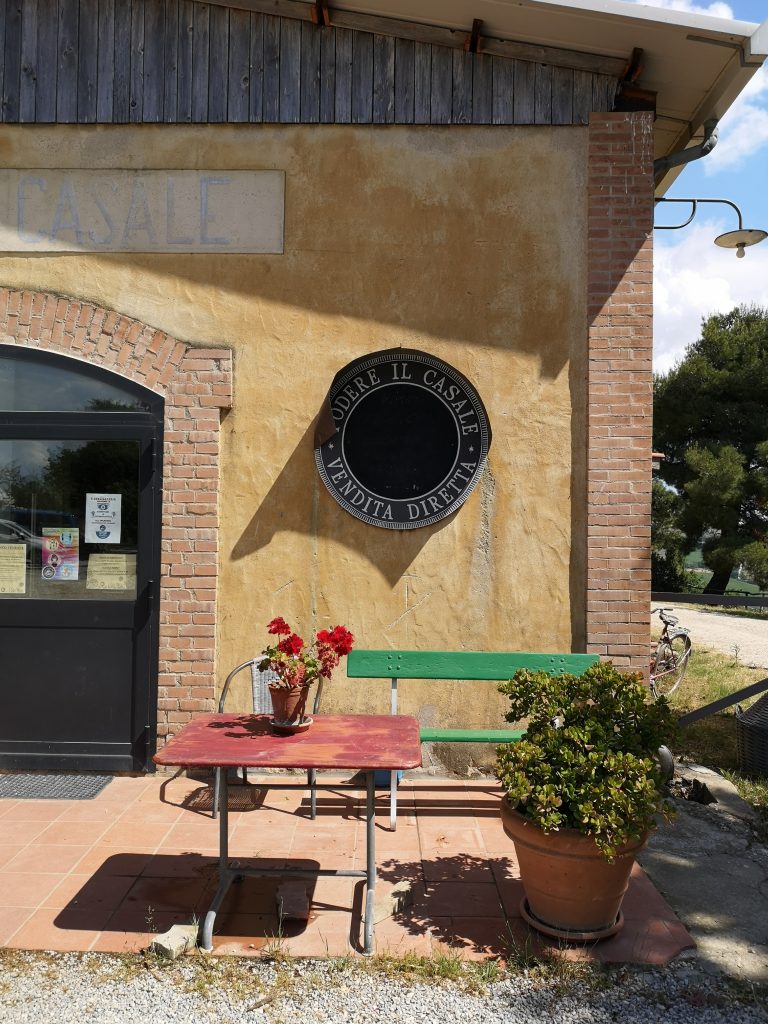
Ulisse & Sandra kept in touch with Alvaro, the farm owner and within six months they were back in Italy and living on the farm with Alvaro and his family. This went on for many months and proved to be the most interesting and important introduction to the everyday life and demands of running such a property as they had never farmed before!
After a time, Ulisse asked Alvaro what had been said between the well-dressed Roman couple who had come to make an offer to buy the farm. He replied, “I Romani non mi piacciono!” (I don’t like Romans) and even though they offered him two hundred million lire above the asking price, Alvaro told the couple from Rome that the property was no longer for sale that day!
And so, in what seems like a fairy-tale ending or a Hollywood movie plot, Alvaro and his wife decided to sell the property to the young family from Switzerland. They must have had a sixth sense about Ulisse and Sandra, knowing that they were the right couple to not only look after the property but to develop it to its full potential and nurture it for the years to come.
They eventually bought the farm in 1991 and have been producing their organic cheese on a mass level for the last fifteen years. “I am just a shepherd,” says Ulisse, “There are not many of us left!” He recalls the early years;
“There was a lot of manual work lined up and we started by renovating the ground floor of the farmstead and the outhouse. We created a dining area and considerably extended the kitchen. A fine Pizza oven was built and we launched a family camping site. Farming gradually went on ahead. We began by planting vines and olive trees and by sowing corn. The range of the other products that now belong to our enterprise developed little by little”.
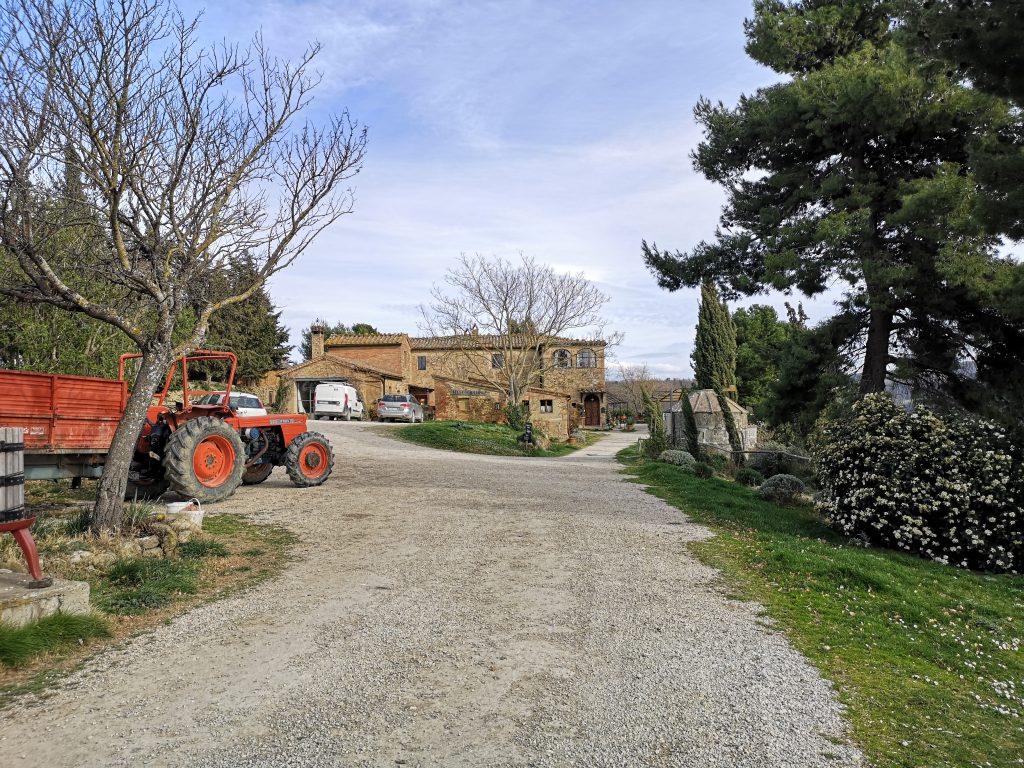
Known as a ‘full-circle farm’, meaning their agricultural methods are all organic so there are no synthetic fertilisers or chemicals used in the whole farming process. The basic difference between sustainable and organic farming methods is that organic farming, when done on a large scale, can still be harmful to the environment. However, a full-circle agricultural system utilises more ecologically sensible practices and poses no harm to the environment. It’s a fully sustainable method of farming.
After many years of hard work, the farm now produces fruits and vegetables, olive oil, wine, grain which is used in their home-made bread and pasta, salami, honey and of course their wonderful goat and sheep’s cheese, which is actually why I’m here – to learn how Pecorino cheese is made!
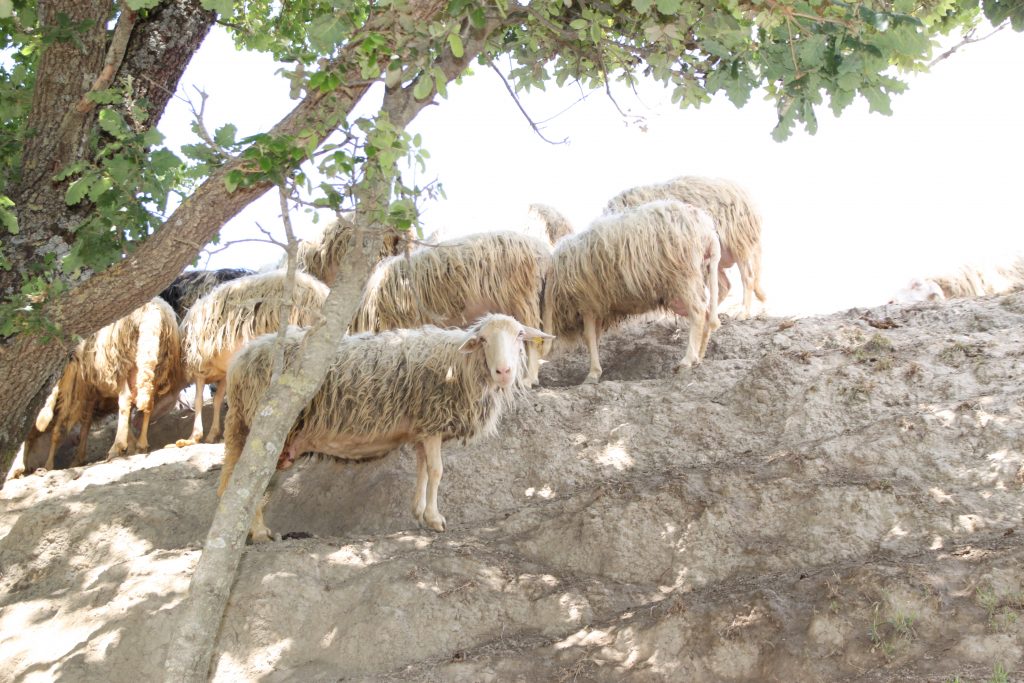
The Val D’Orcia region and more specifically, Pienza is famously known for one cheese that has been made here for centuries – Pecorino. Made from sheep’s milk (pecora in Italian means sheep), Pecorinos are traditional, drum-shaped cheeses. They come in a variety of flavours determined by their age. Aged Pecorinos referred to as ‘stagionato’ are hard and crumbly in texture with buttery and nutty flavours. Young or ‘semi-stagionato’ and ‘fresco’ Pecorinos feature a softer texture with mild, creamy flavours.
The secret of this cheese from Pienza lies in the unique mixture of herbs that grow in the meadows of the Valley. And given the poor quality of soil, these plants have to work harder to survive. “And as a suffering plant has to work harder; it will give you more flavour – this valley is full of suffering herbs,” explains Ulisse. “To make a great pecorino, you must know what your sheep eat, how they live,” And this is one of the most important things to know because what they eat makes the milk interesting and in turn, makes the cheese interesting, which may seem obvious, but most people don’t think about their food origin and flavour in this manner. Other factors to take into consideration are how the animal lives, how it is treated and its environment.
The original sheep on the farm that belonged to Alvaro were not a milk breed. Now Podere il Casale is home to a happy flock of a Sardinian milk breed of sheep who are much slighter in build than most sheep but they give a much better quality and quantity of milk.
It takes five litres of sheep milk to make two small wheels of cheese. Sheep milk is very rich, extremely high in fat and conjugated linoleic acid (CLA) and has a high level of solids, as compared to other kinds of milk. This makes it very suitable for cheese-making. In particular, sheep’s milk produces much more cheese than the same amount of cow’s milk. Five litres of goats milk yields half the amount of cheese as sheep’s milk – so one cheese (and cow’s milk only half a cheese to put things into perspective). Sheep’s milk, however, does not ever separate cream as cows milk does.
The milk sitting in front of me is as raw, fresh and organic as it gets. Milked from the sheep that same morning, it is then simply placed in the fridge until it is used to make pecorino. The milk that is used to make their cheese comes only from the Podere’s livestock and, in full respect with their farming philosophy is raw, meaning that it is not pasteurized. The raw milk processing allows Ulisse to obtain a delicate final product as it is kept at a low enough temperature to ensure the aroma and flavour of the milk are carried through to the cheese. “During cheese production, the temperature of 45° centigrade is never exceeded and we make exclusive use of natural ferments. The result is a savoury raw-milk cheese which has its character and identity, but which can vary slightly from season to season according to the climate and to animal feed supply.”
There are four steps used to make any type of cheese but the variations made to these steps are what will give you a very different result.
The first step is to heat the milk if it has been refrigerated. This is not necessary if the sheep has just been milked as its body temperature is warm enough. The milk must be heated up to around 20 – 40 degrees centigrade to replicate the sheep’s natural body temperature. Ulisse warms his milk up to 30°C and this temperature will make a fresh cheese that can be eaten immediately. The natural bacteria found in the milk has a huge influence on the taste and the texture of the cheese. (there are completely different types of bacteria in a Pecorino cheese compared to mozzarella and compared to Parmesan) Changing the temperature in this first step gives different support to different types of bacteria in the milk. If you start at 20°C, the cheese will be very soft and fresh with a higher content of whey. For harder cheeses, that are also normally aged longer, you start with higher temperatures, therefore activating different types of bacteria.
The bacteria found in the milk is directly related to what the sheep have eaten. The sheep at il Casale live on a diet of mainly hay, barley and the natural pasture. The milk from the morning will differ to that from the evening. Surprisingly, milk on a rainy day is different from milk on a sunny day. Spring milk is also different to Summer milk so the influence of the environment is fundamental to the final cheese product and that is why Spring milk, when the pasture is abundant, fresh and lush gives us such a good pecorino during this season. These factors are also why it is better to buy your cheese from a local farmer who uses pasture-raised milk.
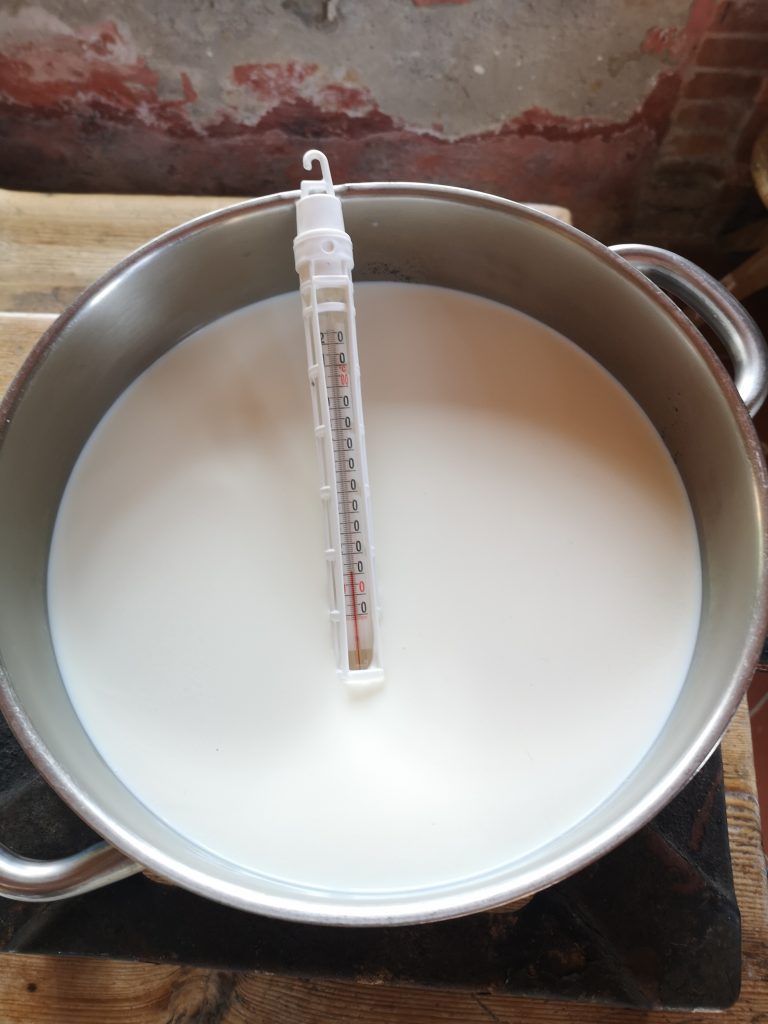
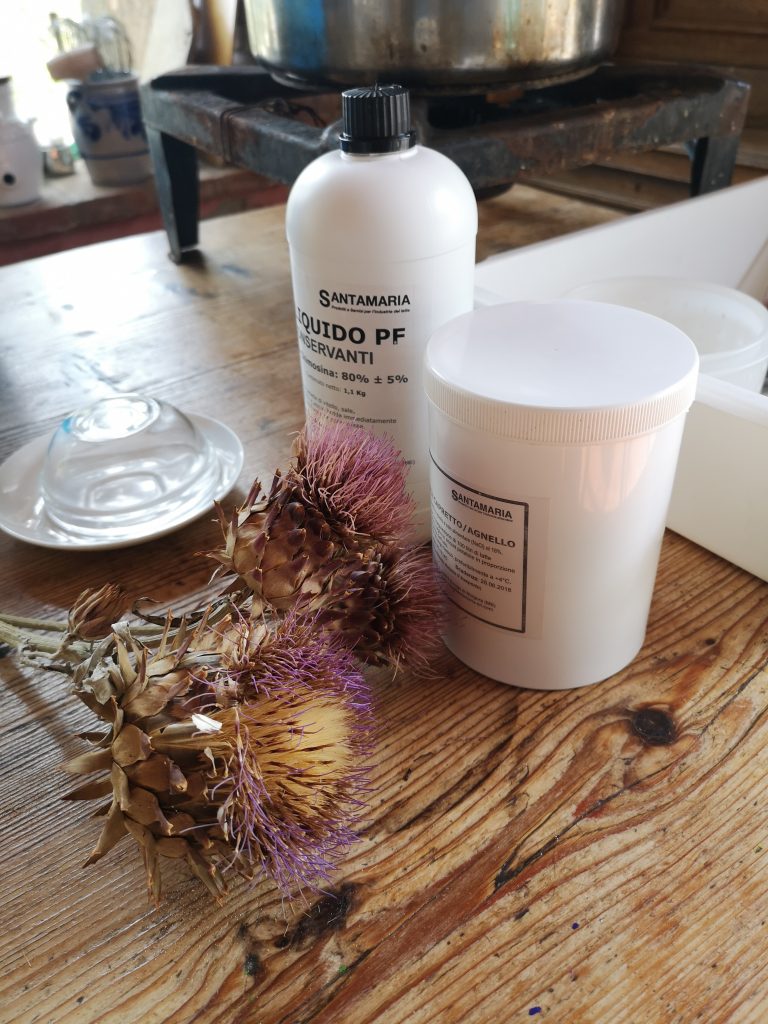
Animal liquid rennet and the plant alternative
The second step is to add rennet which is derived from the stomach of a calf, lamb or goat while their diets are still limited to milk, It contains the enzyme Chymosin which has the ability to coagulate milk. Alternatives that can achieve the same result as rennet include vinegar and lemon juice. Other options are to acquire “vegetable rennet” made from one of several plants such as thistle, nettle and mallow.
Ulisse uses the tiniest amount of liquid calf rennet. (for 100 litres of milk, you need 20-40grams). Feta cheese, however, requires double the amount. The amount of rennet used also determines how fast the cheese is produced – the more you use, the faster the cheese will be made.
Once the rennet has been added and stirred to ensure it has mixed in well, the movement of the milk must be stopped as the rennet begins to work immediately. It must sit for at least twenty minutes to allow the milk to coagulate. Time is a very important factor of cheese making – the longer you leave the curds to set in-between each slicing, allows the coagulation to gain more strength.
The next step is to cut through the now solid mass of milk to create the curds. This is known as Cutting the Curd, a step in cheesemaking in which the curd is cut into equal-sized pieces. The liquid that is left behind is the whey. (suddenly we understand what Little Miss Muffet was eating in that old nursery rhyme!)
It is often recommended to wait five minutes after the first cut, before cutting again. Larger curds mean you can age the cheese for a few months only and are used to make cheeses like Brie & Camembert. Smaller, rice-sized curds are used to make hard cheeses such as parmesan. Aged hard cheeses have much smaller curds meaning much less moisture.
Ulisse explains that he is aiming for ‘hazelnut’ sized curds. We take another break to let the curds develop further and Ulisse explains more about the art of cheesemaking to me. Moisture is another important factor when making cheese. The amount of moisture left in the cheese will determine how long it can age. Stirring the curd, so the curds are kept as separate particles floating in the whey, assists with effective whey removal.
It’s important to note that organic whey has its own very special properties. Ulisse tells me of the farmer on the next property, a 90-year-old lady who often asks Sandra to bring her some whey as when she was younger, the girls believed it made them more beautiful. Whey was drunk as a healthy elixir, long before the whey protein powder market exploded. It is not only high in protein, its good bacteria is good for our gut and so cleanses the system. When whey is reheated up to 83°C you get ricotta. (the word ricotta translates as re-cooked).
Step four is when the acidity (sourness) develops and this is what preserves the cheese. Larger curd cheese has very high acidity, whereas all aged cheeses need just a small acidity to be preserved.
The curds are then gathered and hooped, which is the process of placing the curd into moulds and baskets, pressing out the whey and letting them drain.
The cheese is brined and then stored in the refrigerated pantry where the temperature and humidity are carefully controlled. Here the wheels of cheese are left to age and where the rind is built up.
The refrigerated cheese pantry at il Casale is filled with shelves lined with different types of Pecorino in various stages of ageing. Freshly salted pecorino, two months old pecorino with its distinctive red rind, as well as other wheels of pecorino flavoured with truffles, red pepper, and some that are nestled cosily in a nest of straw. Other shelves reveal larger rounds of cheese in different stages of maturation revealed by the various stages of mould covering their rind. Pecorino is also commonly aged in ash, walnut and chestnut leaves.
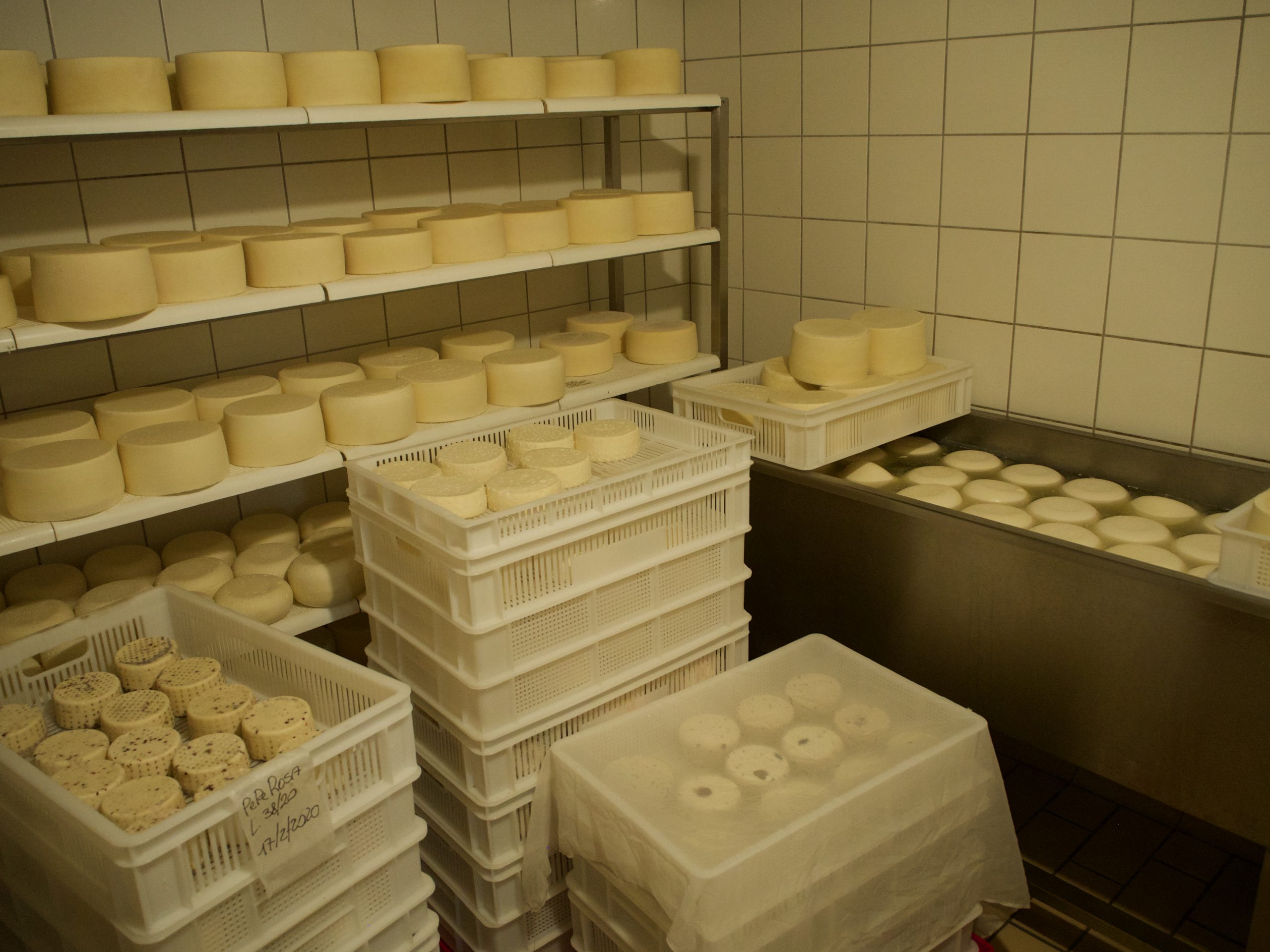
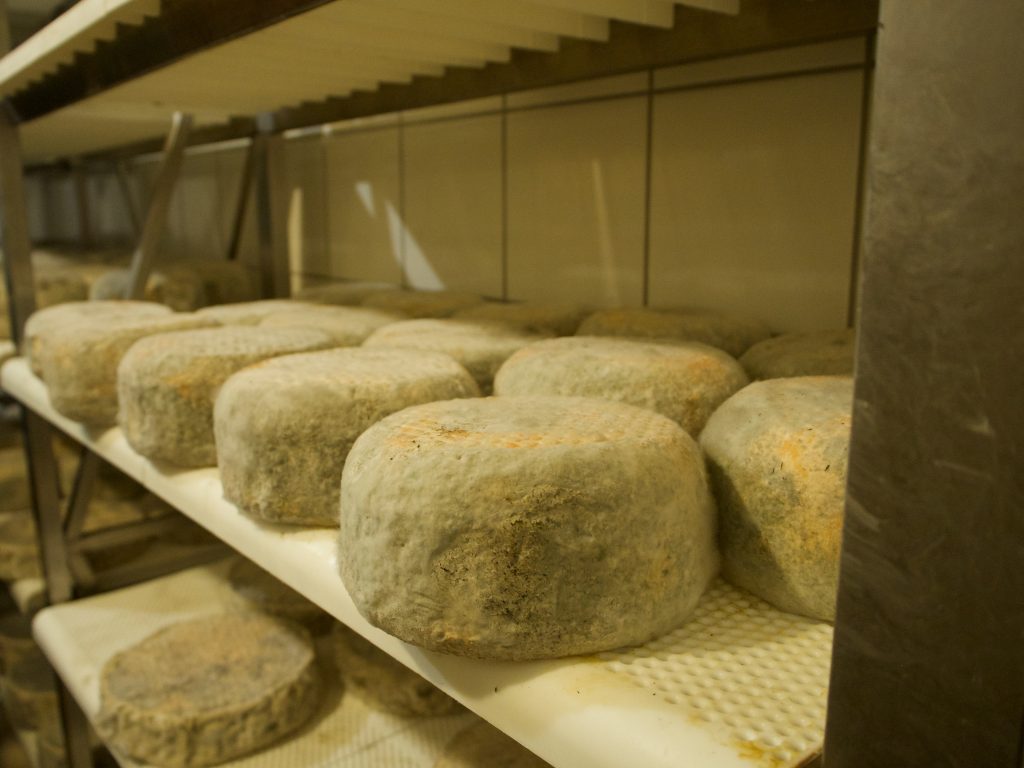
You might often see Pecorino di Grotta in some stores, usually from Maremma. This means that the cheese has been aged in caves and not in a modern refrigerated pantry. The micro-climate of these caves gives additional properties that add to the flavour of this particular cheese.
After I toured the cheese pantry, came the very important tasting. I was presented with the most beautiful cheese board with eleven different types of pecorino accompanied by Il Podere’s own organic honey and homemade chutney and jams.
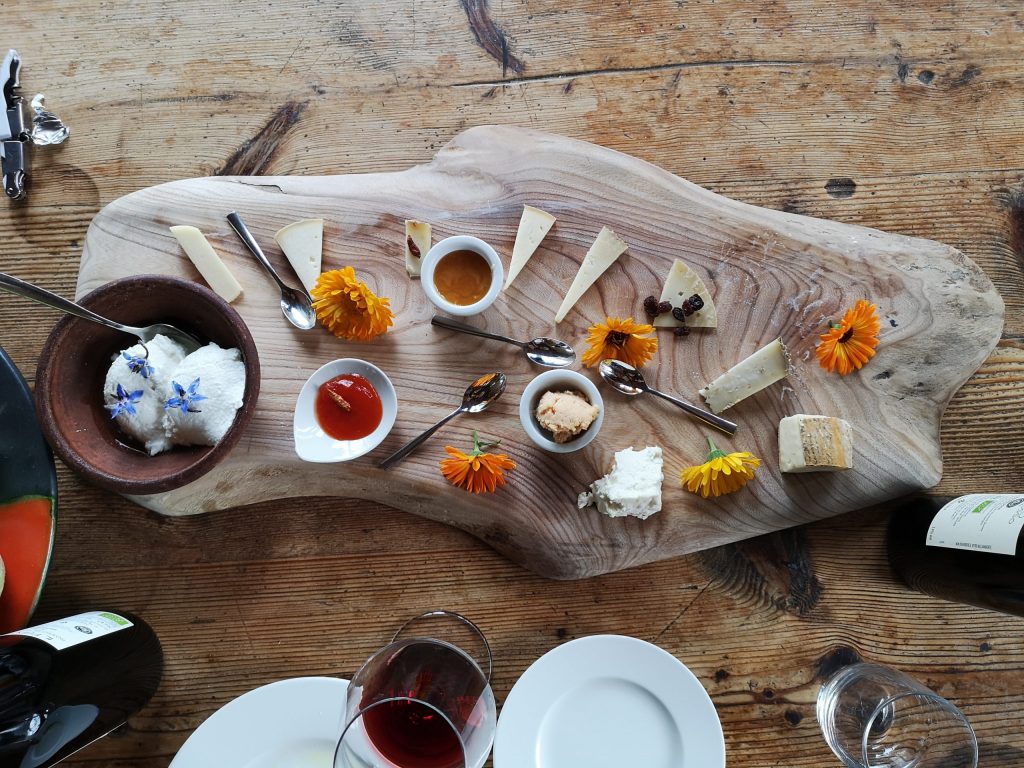
Ulisse’s home-made rye and spelt sourdough completed the degustation. I started from the youngest cheese, a fresh ricotta made that morning and worked my way around the board, tasting the subtle differences between a mild, week old Pecorino fresco and more flavourful two-month-old Pecorino before moving onto some ‘semi-stagionato’ pecorino which is between two and four months old. A Pecorino stagionato is usually aged for a minimum of four months. I moved onto the stronger flavoured older pecorino varieties that had been flavoured with chilli, another that had a bran and olive-oil sediment crusted rind, known as ‘crusca’ in Italian while also enjoying a glass of il Casale’s organic red wine which paired perfectly.
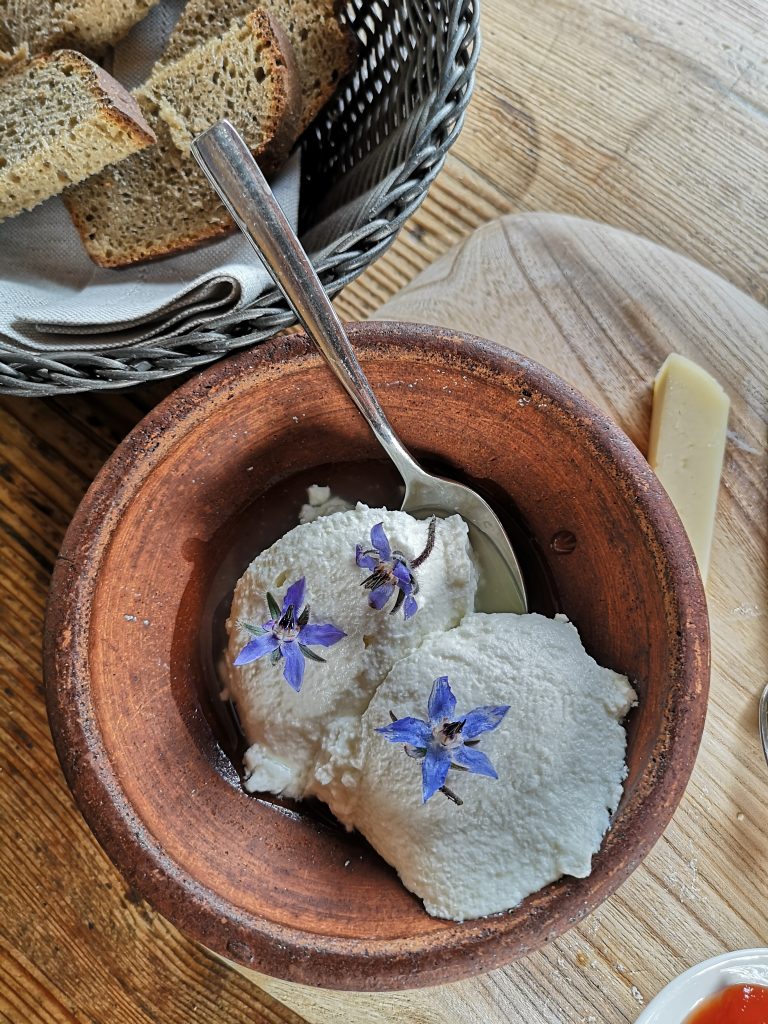
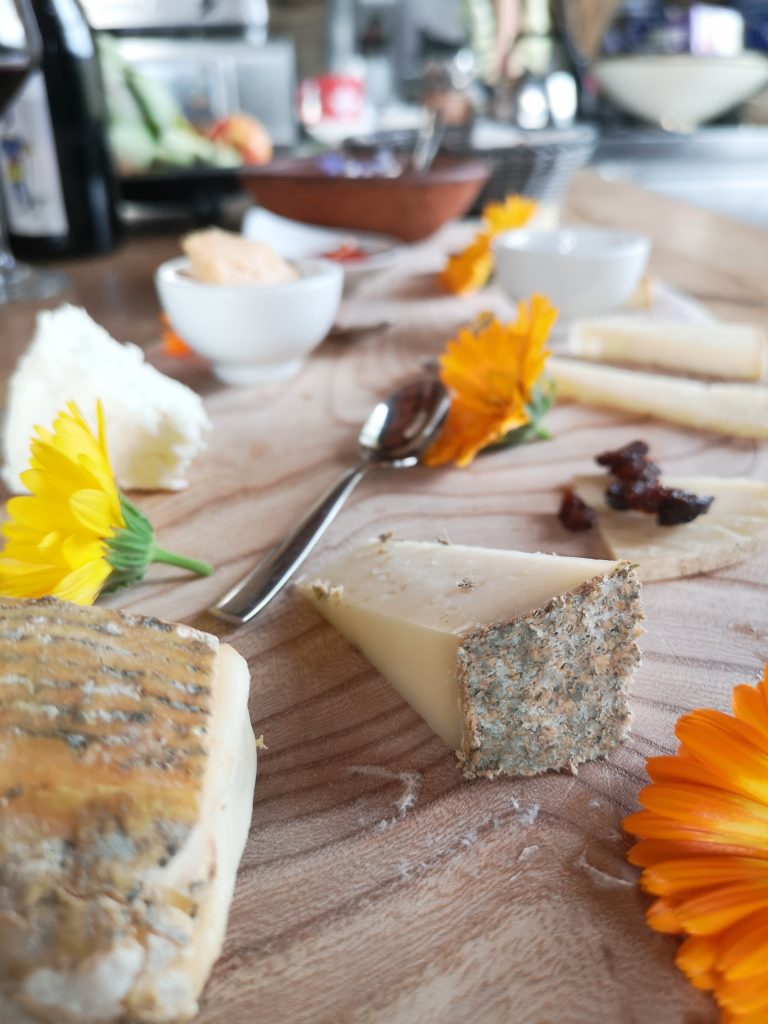
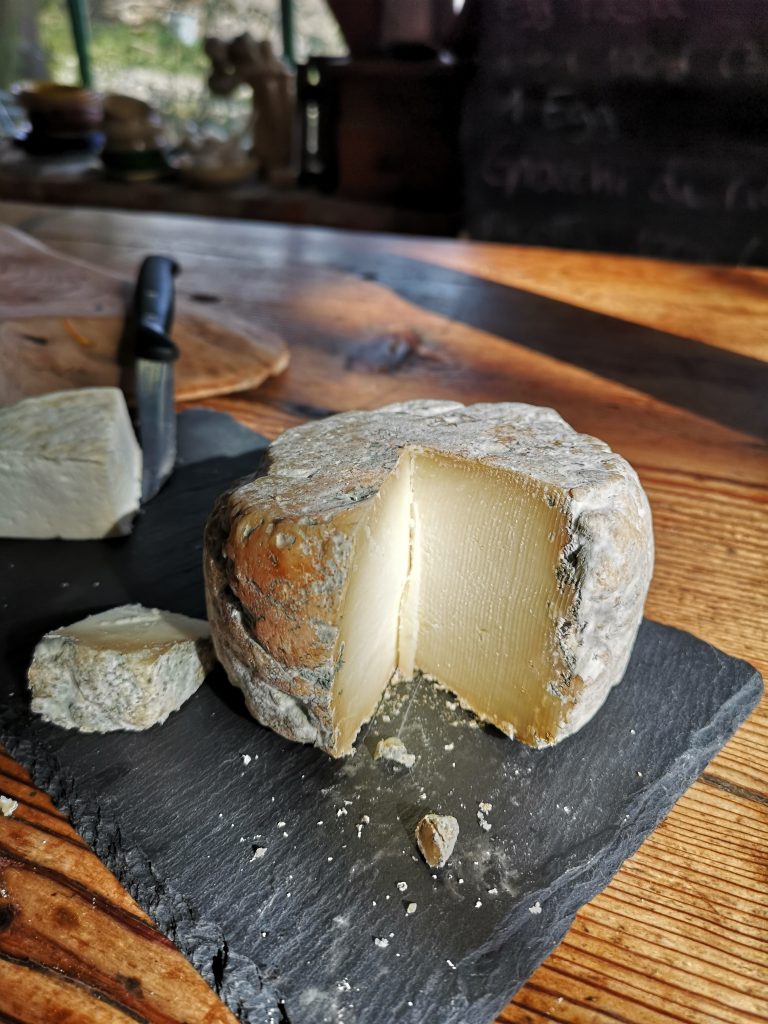
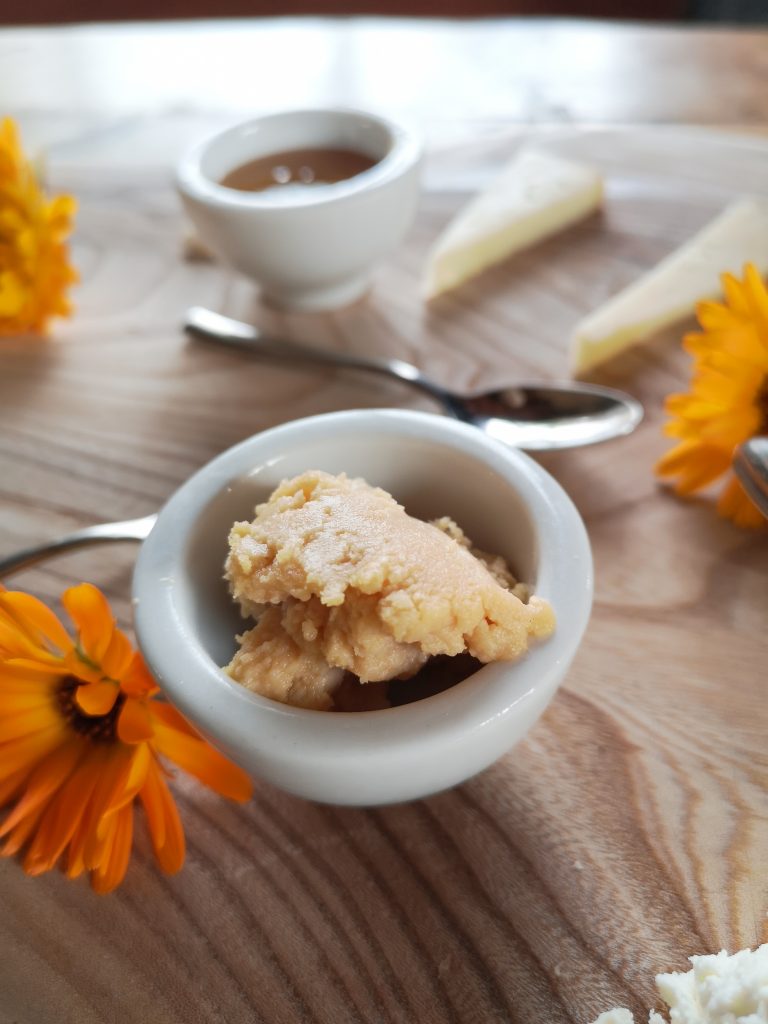
Bruz – worth saving to last!
Ulisse suggests I leave one particular cheese to last and he says, you will either love it or hate it! It is very dark in colour and has a very strong smell and he had pointed out the square aged blocks of this particular cheese earlier. It is called Bruz and the recipe for how it is made comes from Piedmonte. To not throw away an older cheese of at least a year old, it is mixed with white wine and placed in a terracotta pot for two months which allows an incredible fermentation to take place. To stop the fermentation, grappa is added and Ulisse tells me that this cheese can then last forever. The flavour was sharp and pungent and I absolutely loved it!
You can visit Podere il Casale any day of the week to purchase their cheese, wine and honey. During these days when no-one could visit due to the global pandemic, they offered free delivery and a Saturday morning Farmer’s market where locals could also buy their fresh fruit & vegetables. The farmhouse also offers cooking classes, lead by Sandra where you will prepare a complete menu while gathering ingredients directly from the garden. You can also choose to do a pasta, pizza or bread-making class.
Their restaurant offers the most enticing menu where once again the hero of every dish is a product from the farm. I have since returned with my family for lunch and we were so impressed with the quality and level of the menu! You can also order a picnic basket to eat on the property – be careful of those peacocks as I hear one of them likes to be hand-fed!
And for those of you who would like to become part of the Il Podere ‘sustainable universe’, guests have the opportunity to stay in the farm campsite!
I came to Podere il Casale for a Cheese-making workshop but left with so much more knowledge and appreciation for not only how cheese is made but of all the important factors necessary to ensure the unique flavour that arrives on our plate. The one ingredient however that cannot be bought or found easily is the passion and dedication that Ulisse and his family have for their produce and home.
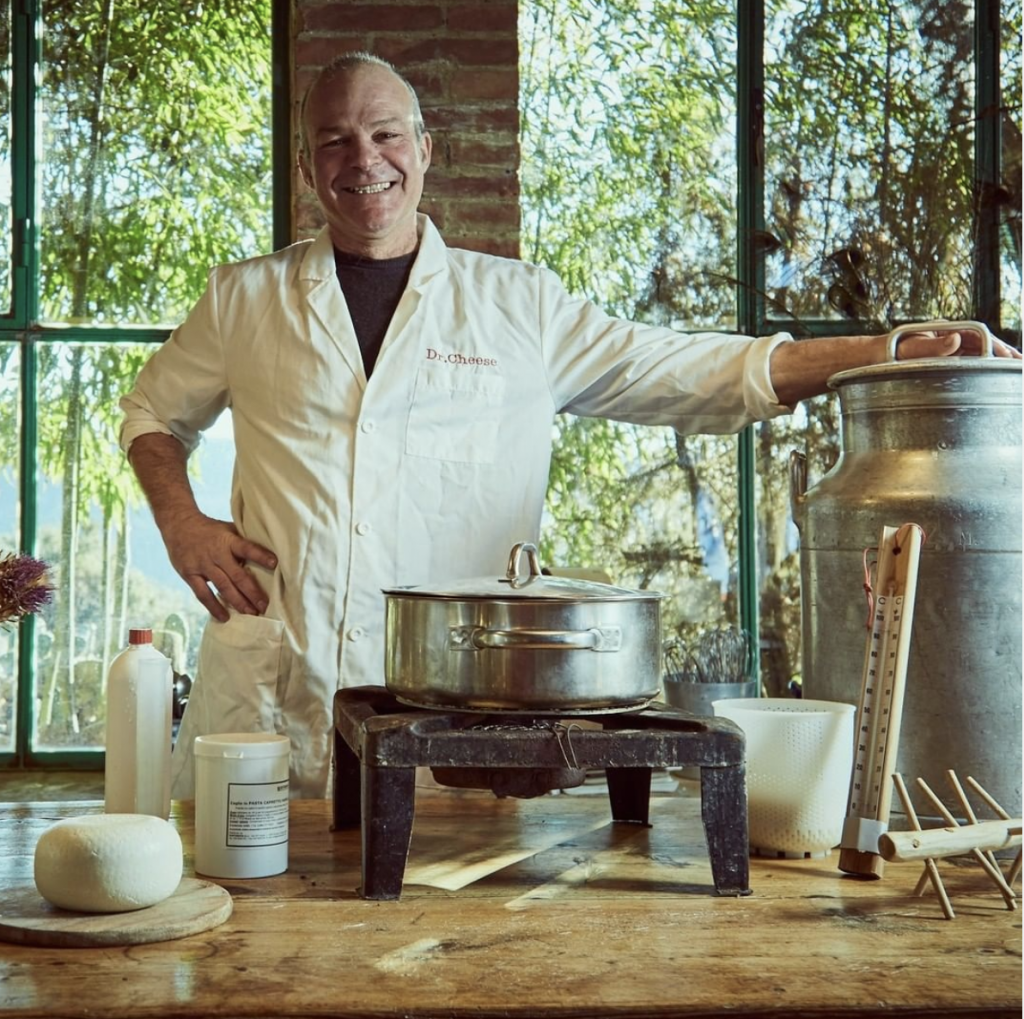
Ulisse during his Cheesemaking workshop 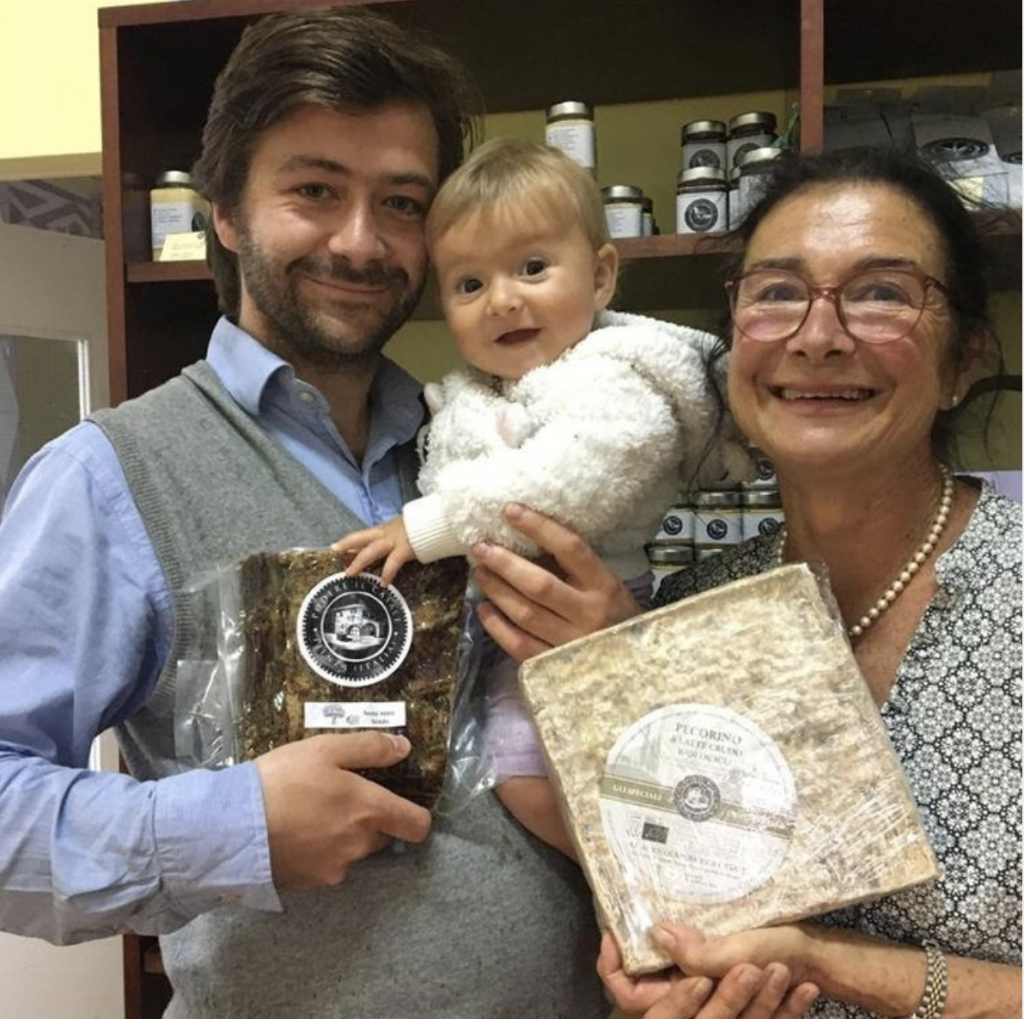
Micha, his daughter Stella and Sandra
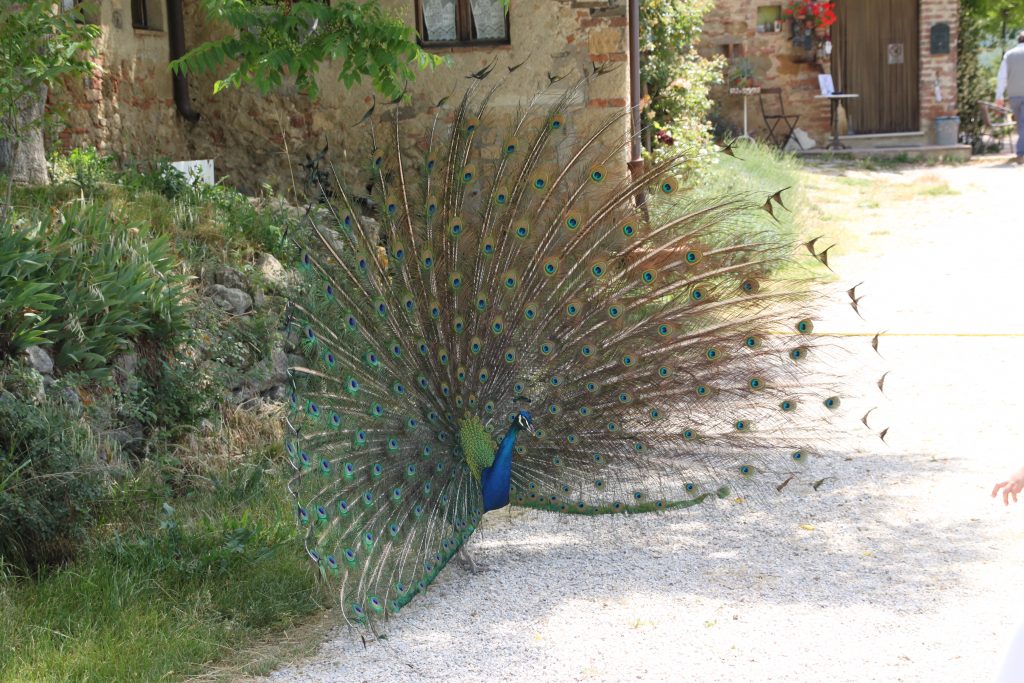
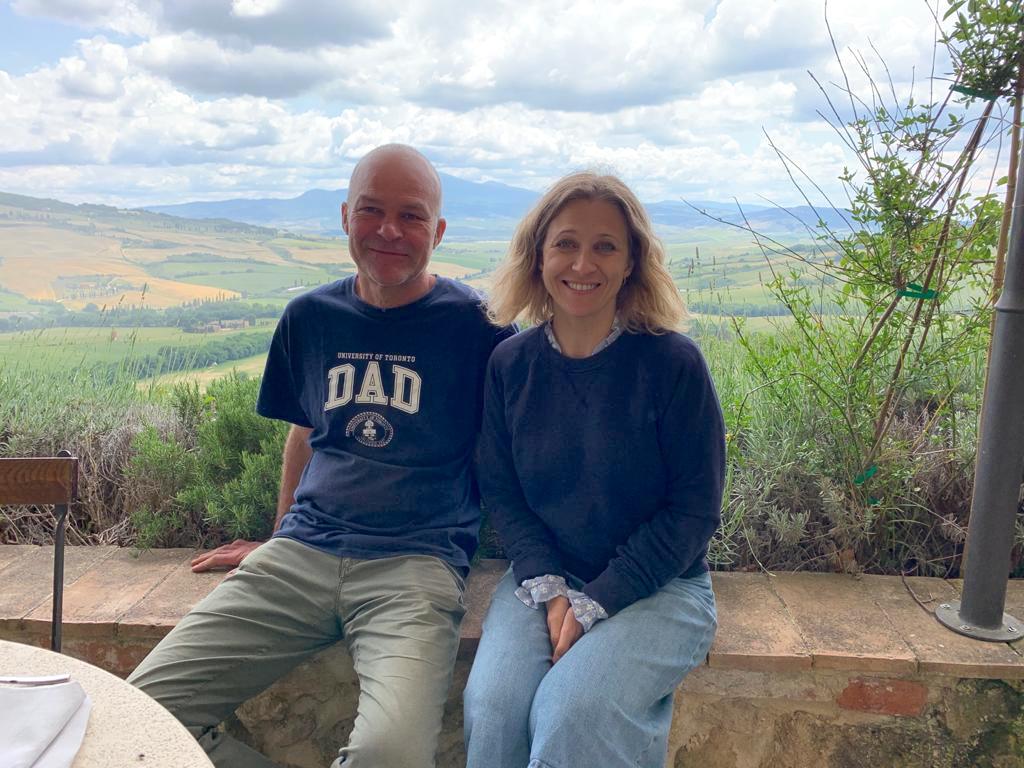
Podere il Casale
Via Podere Il Casale 64 53026 Pienza (Siena) Italia
Phone: +39 0578 755109 Email: info@podereilcasale.it
You can read more about the nearby town of Pienza here.
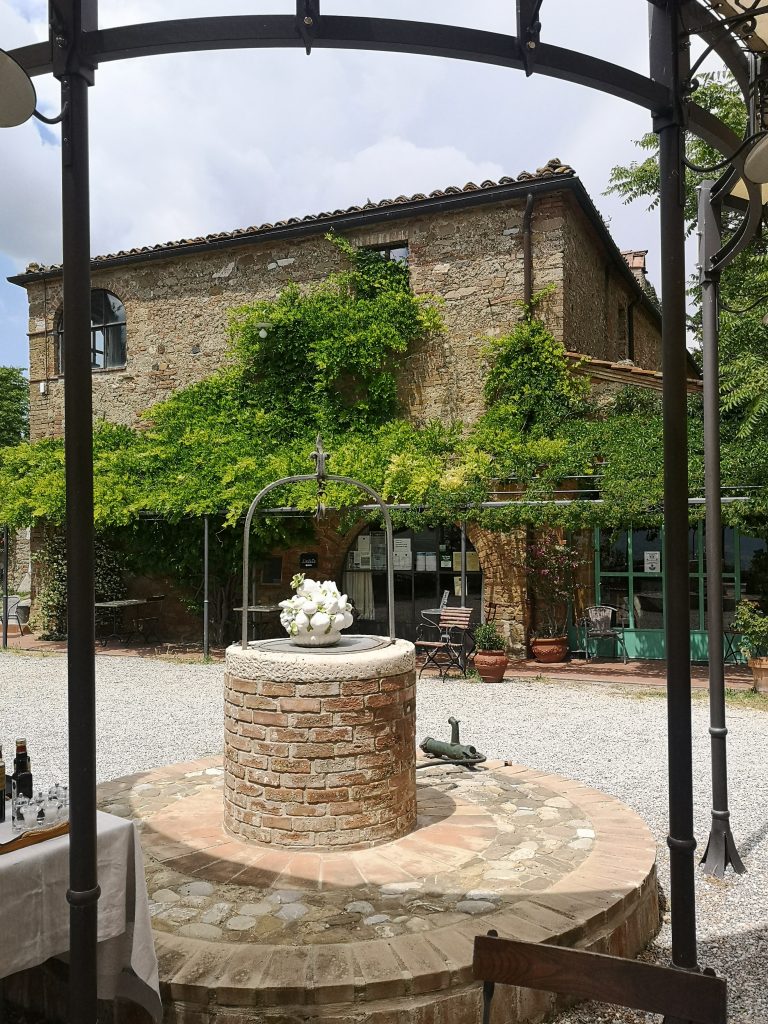
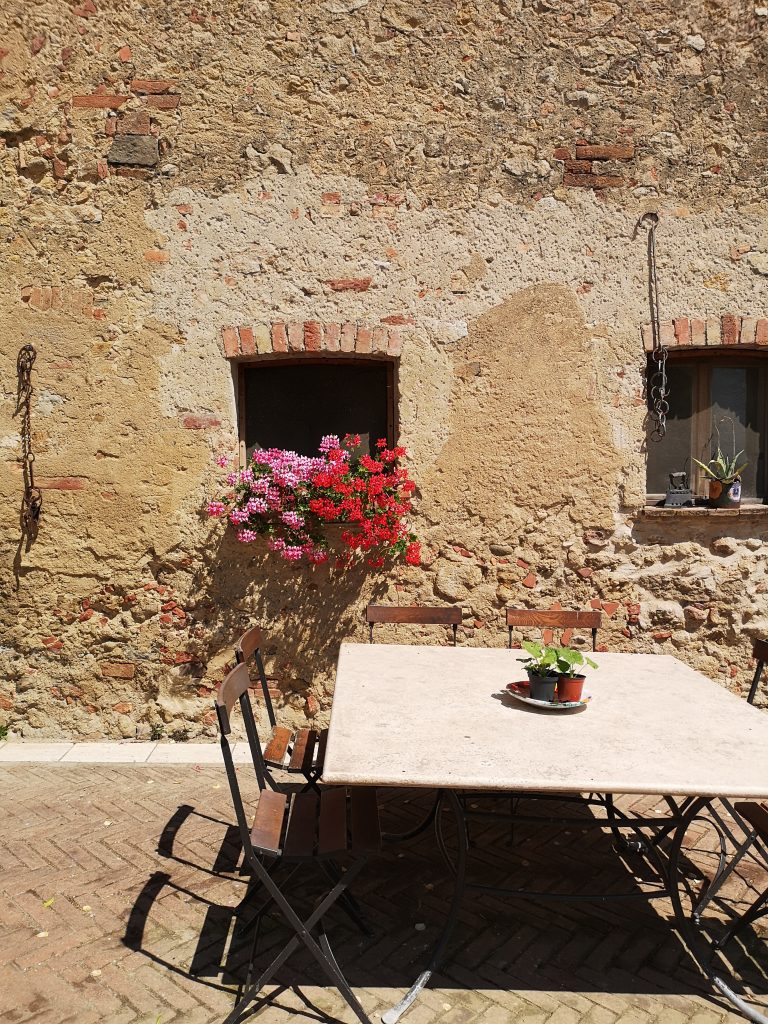
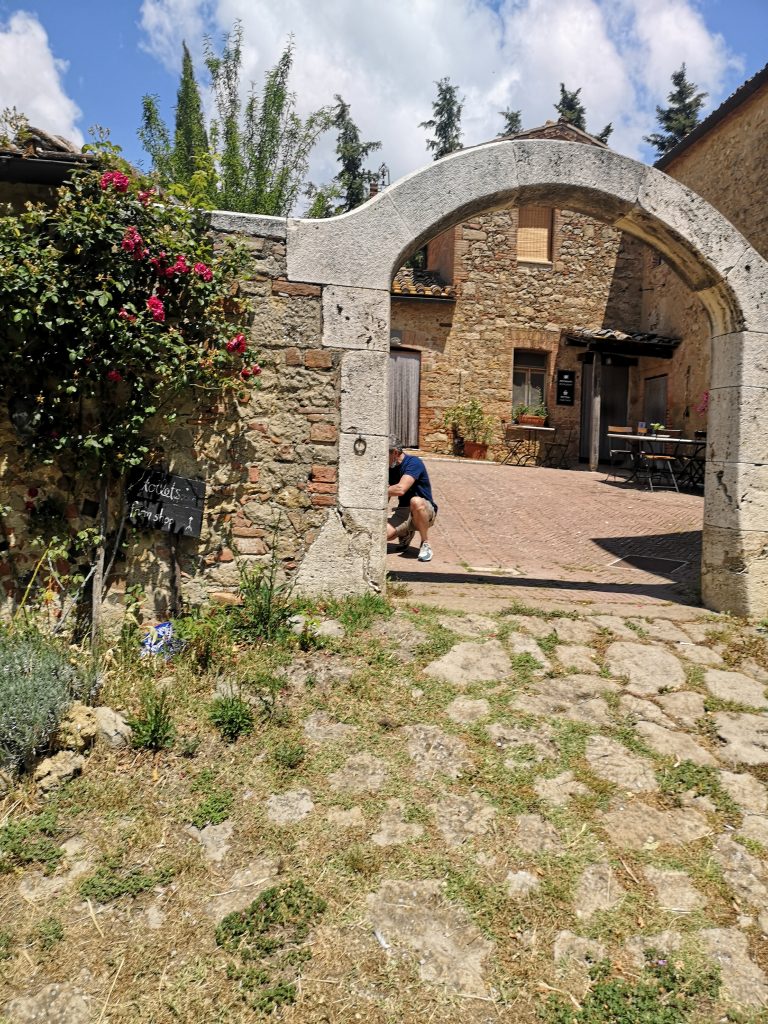
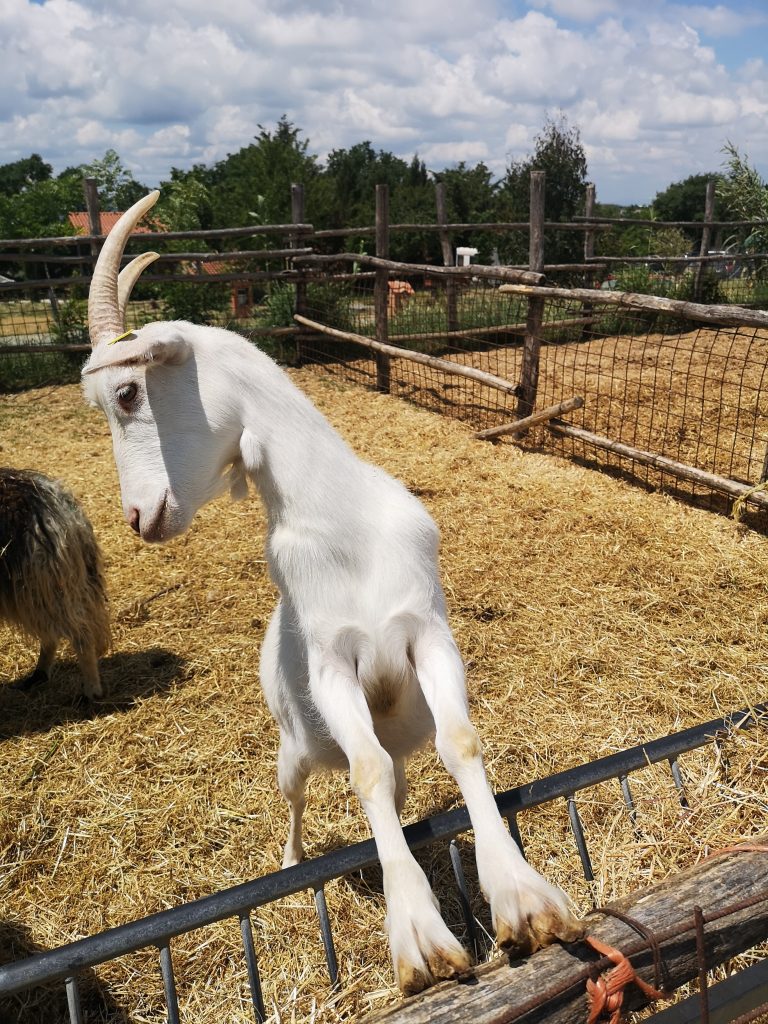
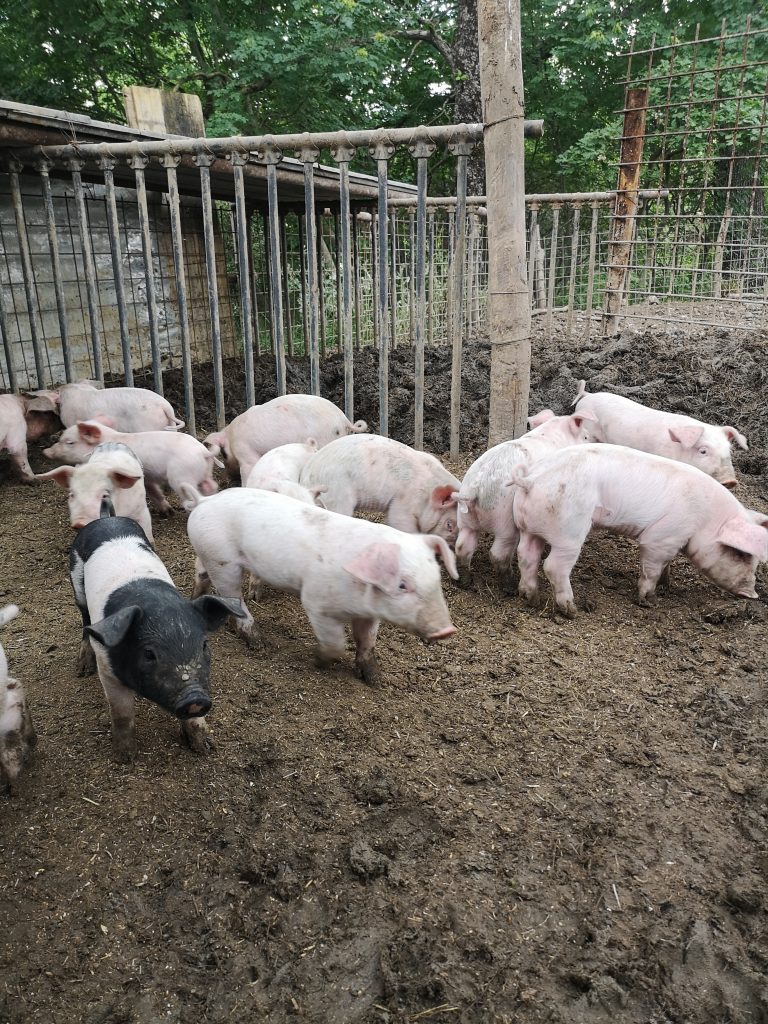
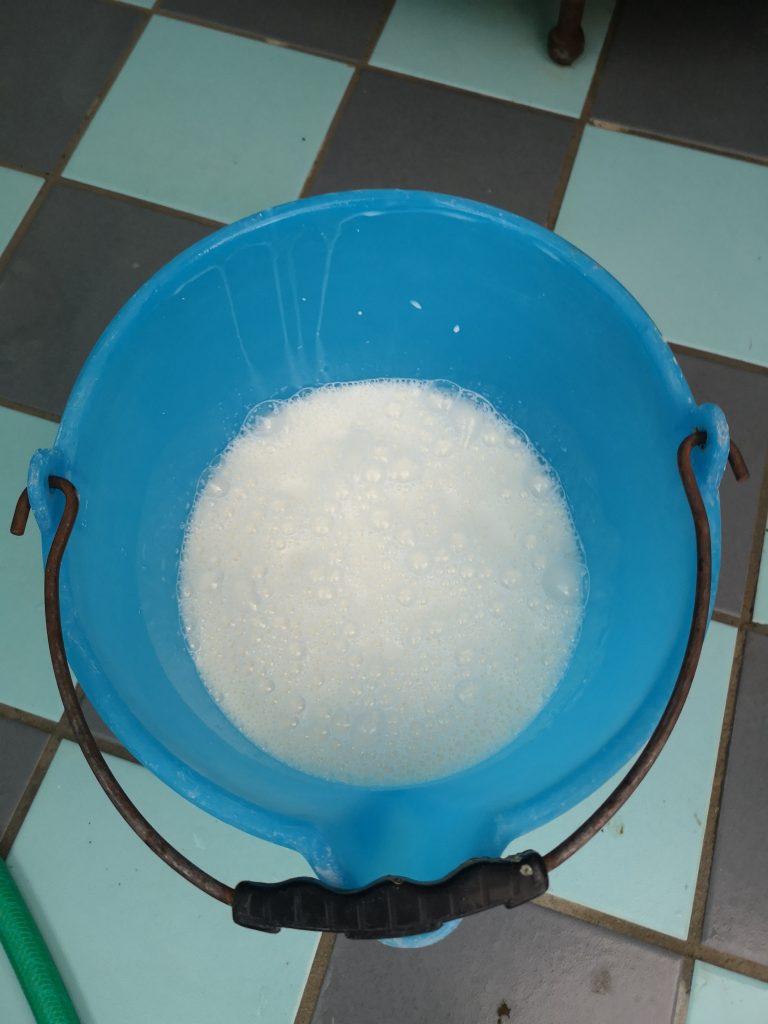
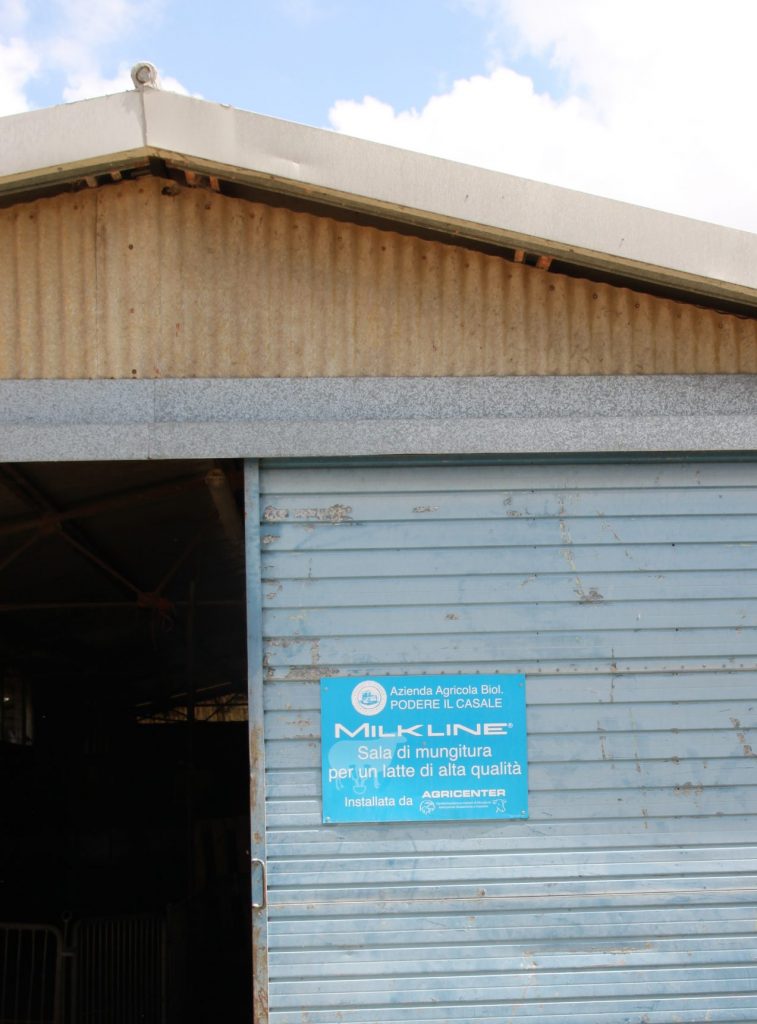
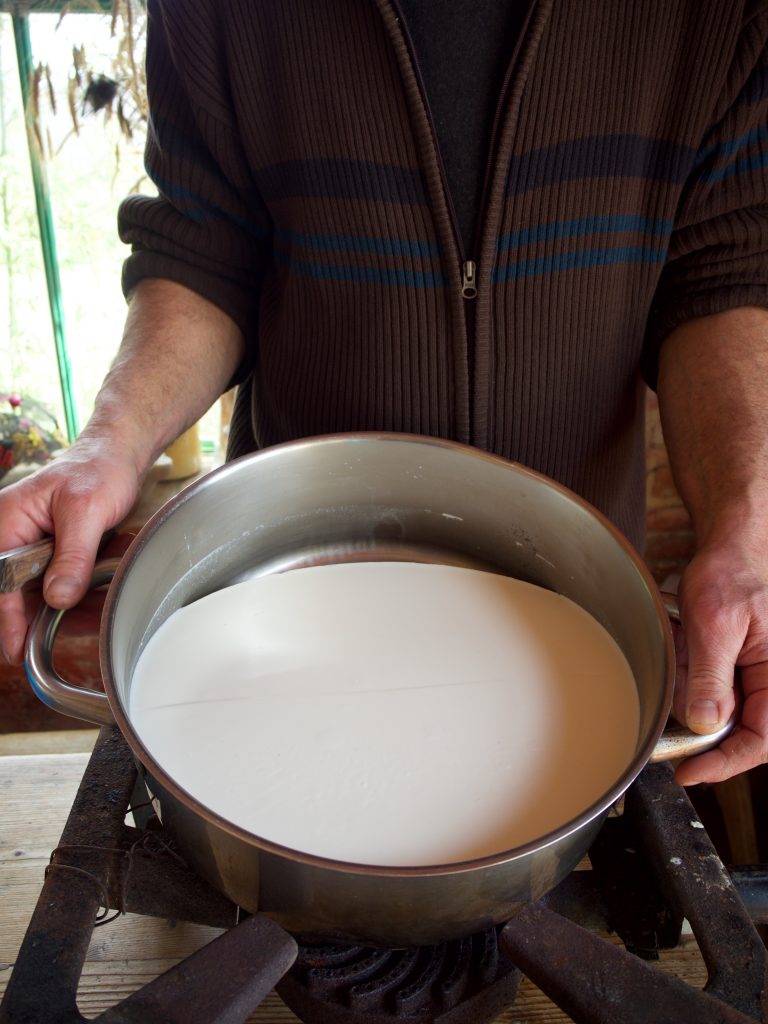
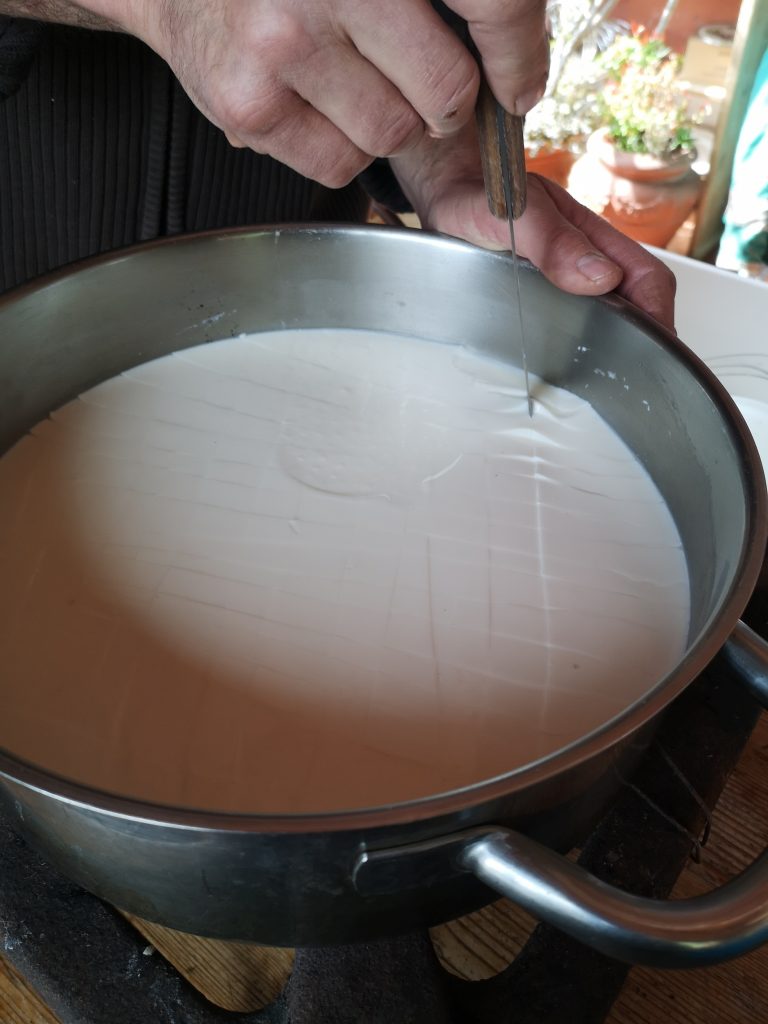
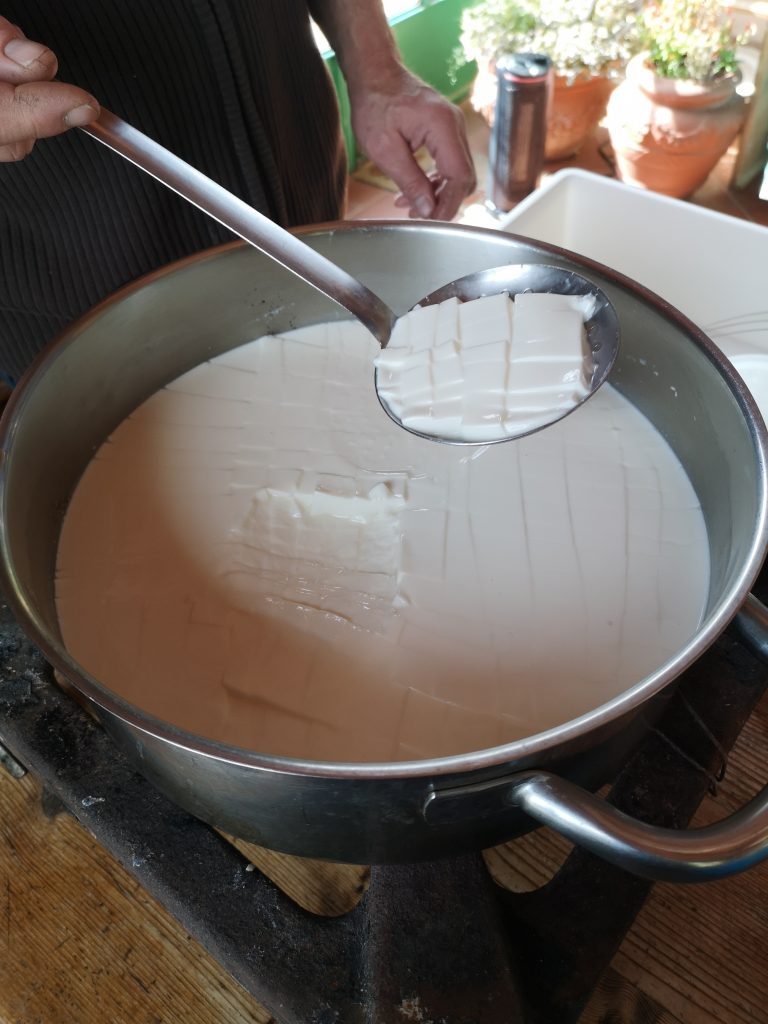
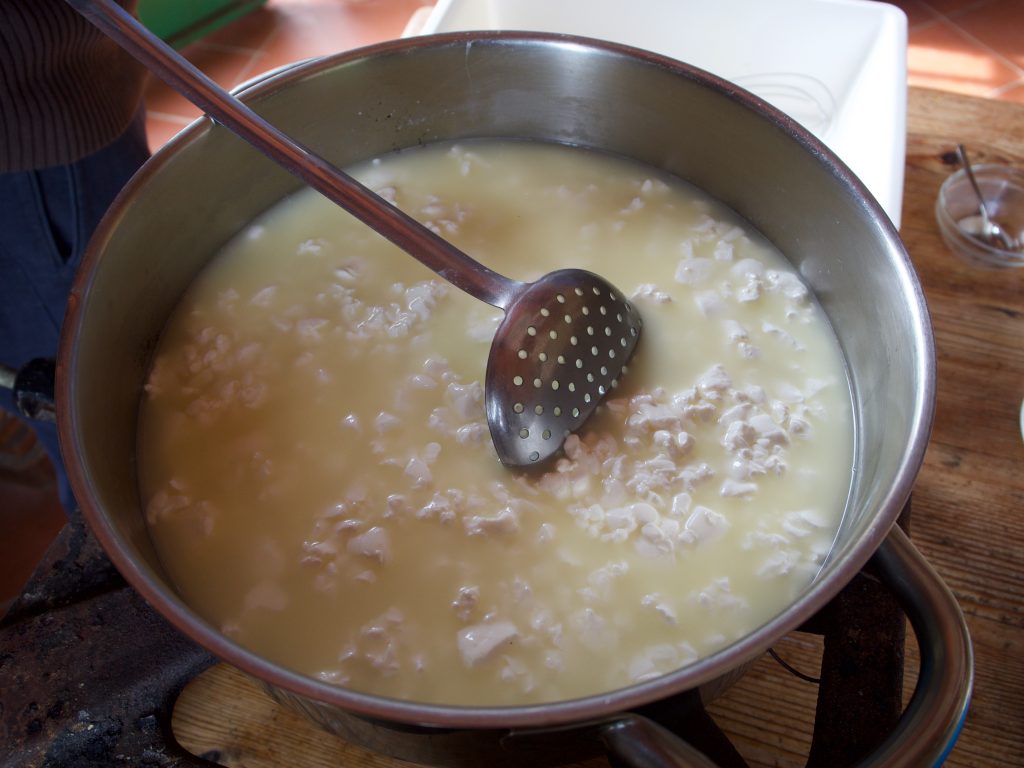
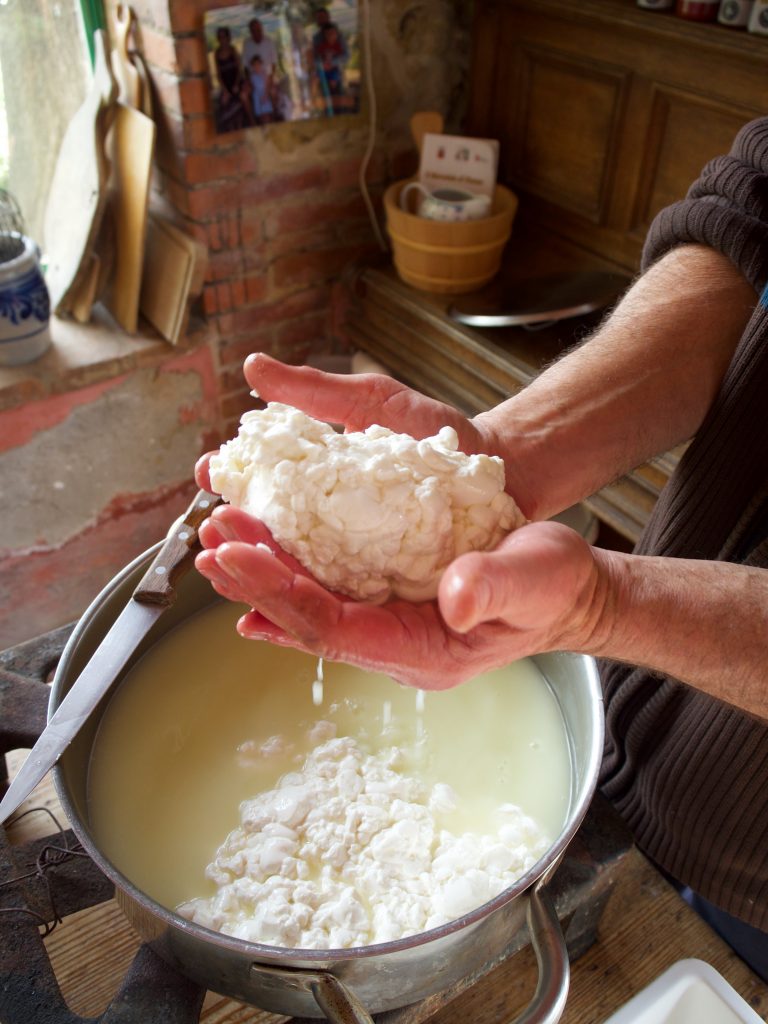
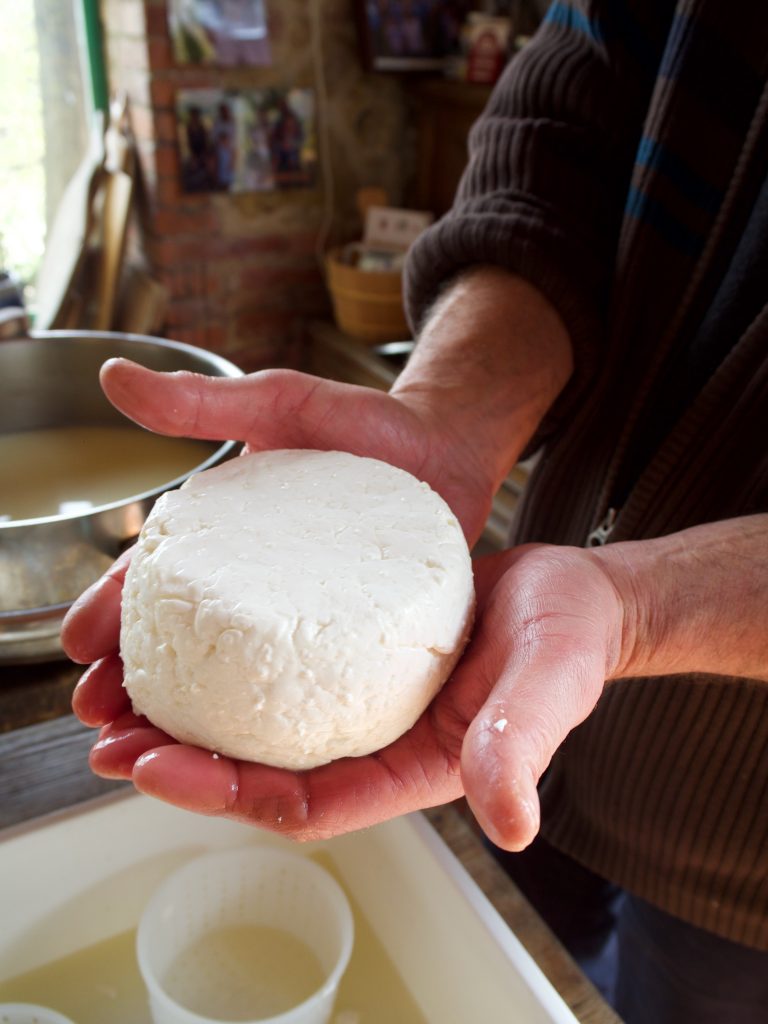
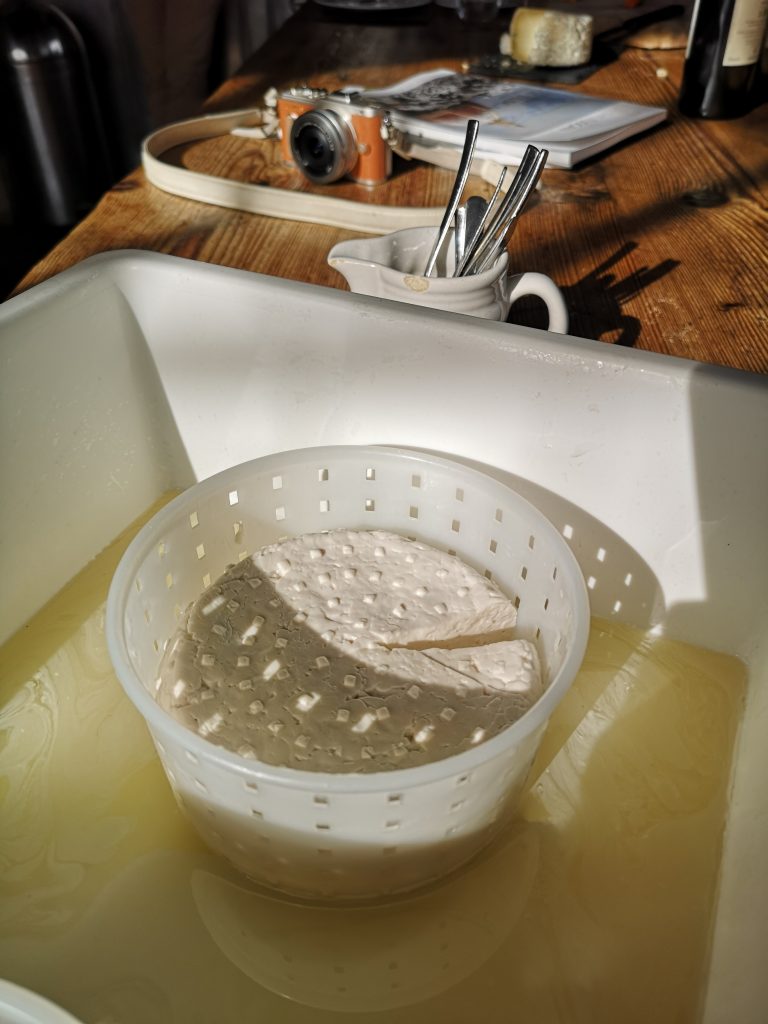
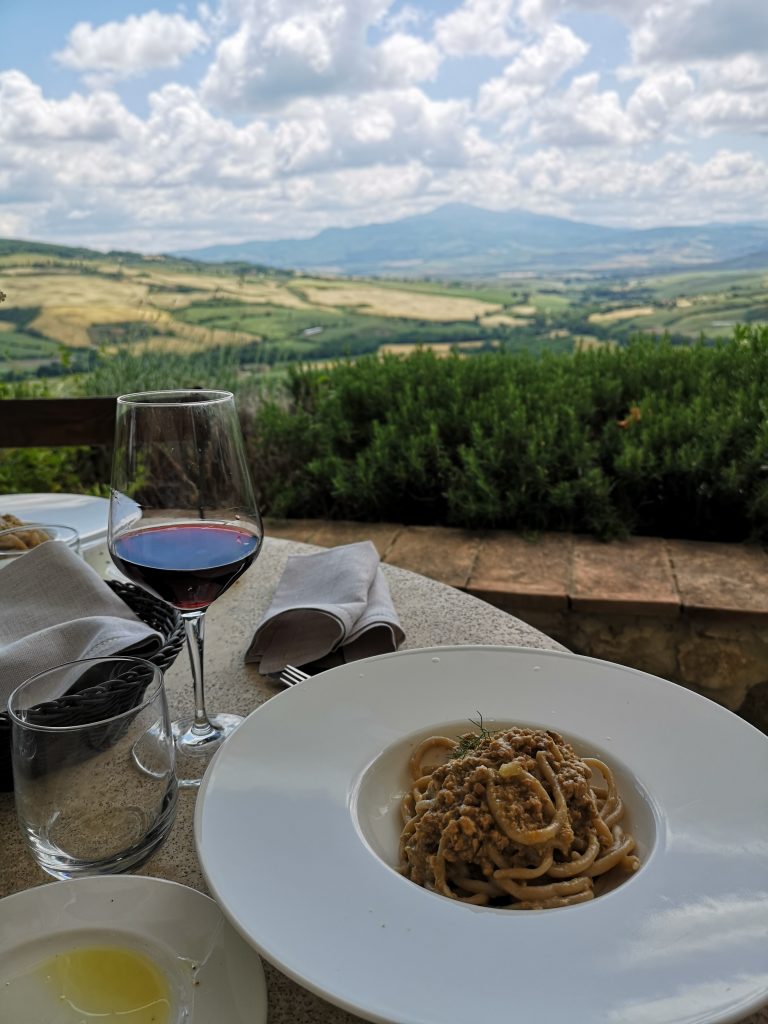
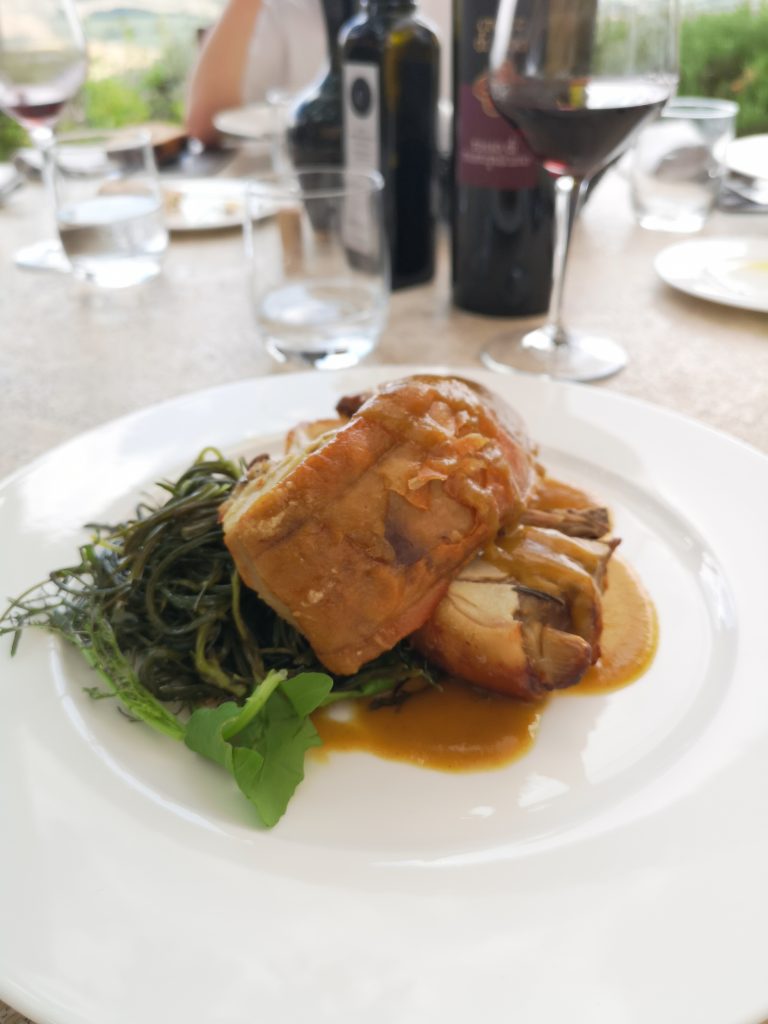
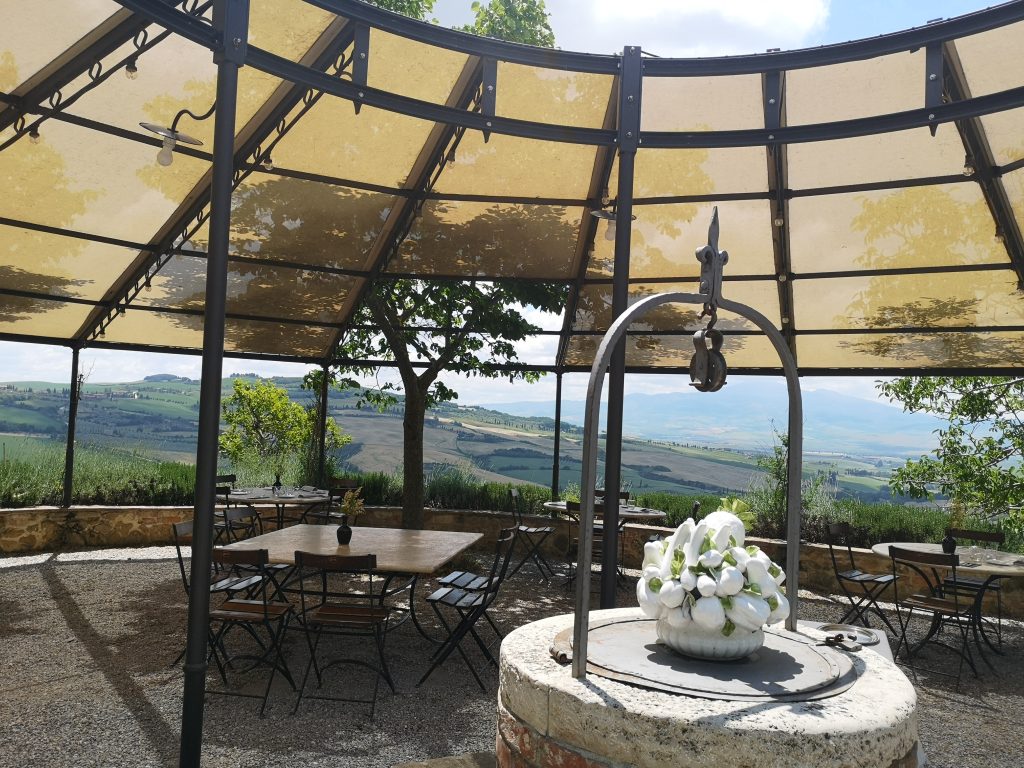
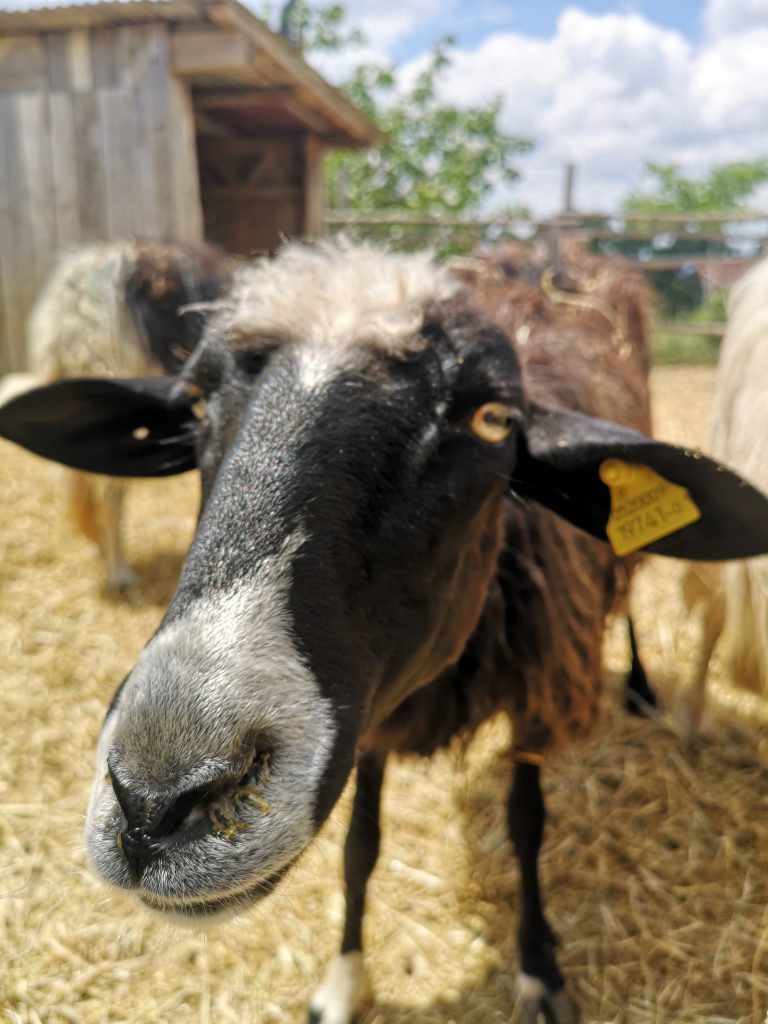
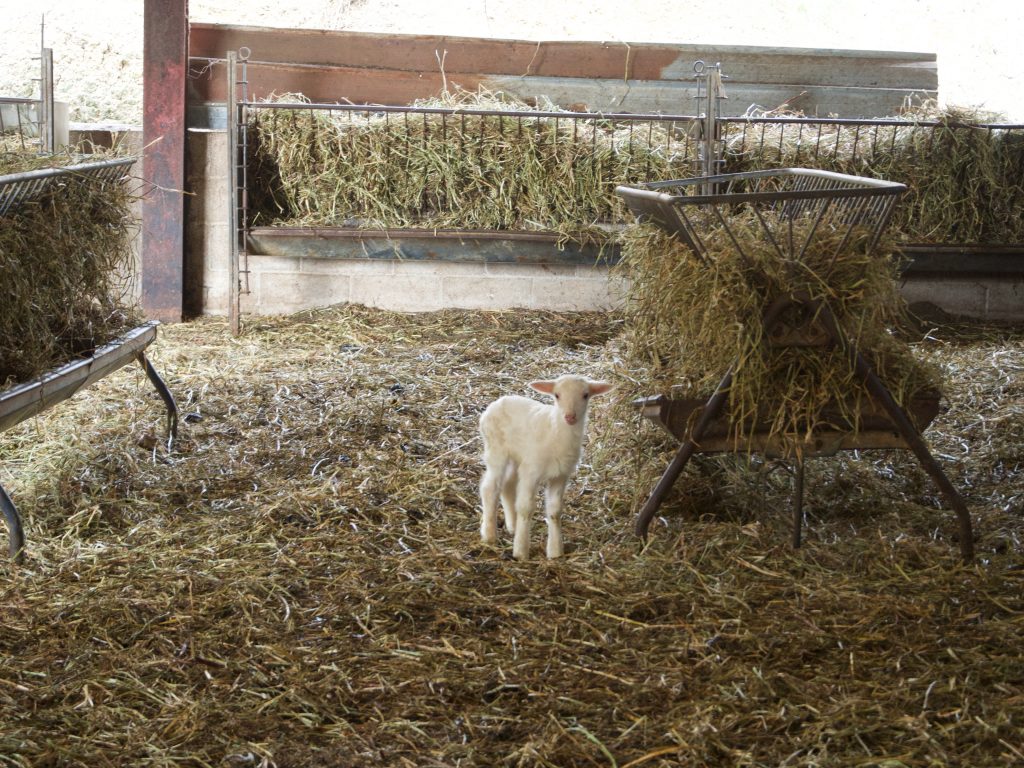
+ show Comments
- Hide Comments
add a comment